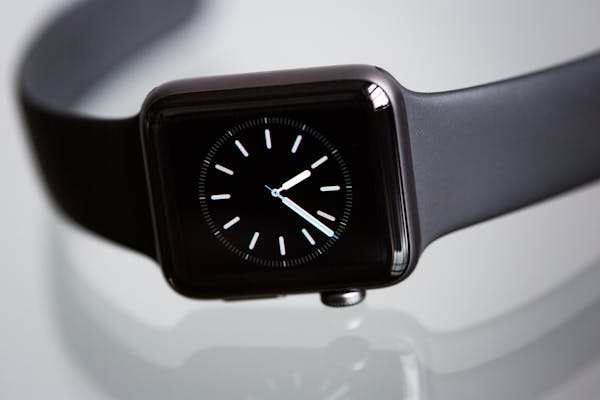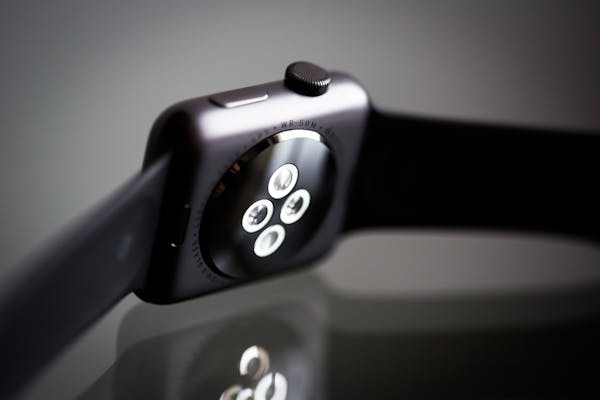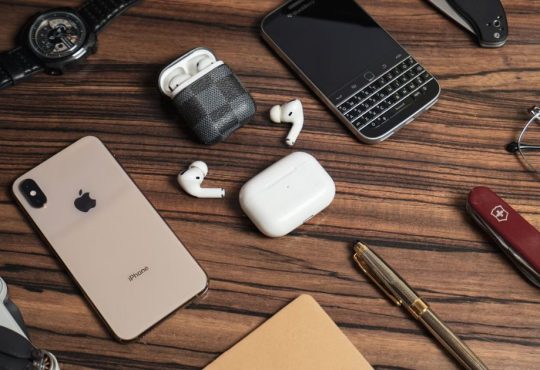Smartwatches have evolved from simple wristwatches to powerful wearable gadgets that help people stay connected, monitor their health, and enhance productivity. As technology advances, the options for smartwatches have multiplied, offering a wide variety of features to meet different needs and lifestyles. But with the abundance of options, choosing the right smartwatch can be a challenge. In this guide, we’ll delve into the world of smartwatches and provide key tips on choosing a smartwatch that suits your needs.

The Evolution of Smartwatches
Smartwatches have come a long way since their inception. The earliest versions were essentially digital watches with basic computing features such as calculators and simple games. However, in the last decade, they have transformed into full-fledged companions for smartphones, offering a range of features including GPS tracking, heart rate monitoring, notifications, and more. Today’s smartwatches can track your fitness activities, help you stay connected without needing to pick up your phone, and even monitor critical health metrics like blood oxygen levels.
The rise in popularity of smartwatches is fueled by their ability to seamlessly integrate technology into daily life. Instead of just telling time, these devices now serve as mini-computers that sit on your wrist. Whether you’re an athlete, a business professional, or someone who simply wants to stay on top of daily notifications, there’s a smartwatch designed for you.
Why You Should Consider Buying a Smartwatch
Before diving into the tips on choosing a smartwatch, it’s essential to understand why owning one can be a great investment. Here are some key reasons why people are increasingly adopting smartwatches:

- Fitness and Health Tracking Smartwatches have become invaluable tools for those looking to track their fitness journey. Modern models offer features like step counting, heart rate monitoring, and even GPS tracking for outdoor activities. For more health-conscious users, some models now provide sleep tracking, blood oxygen monitoring, and even electrocardiogram (ECG) features. These tools can help users monitor their health in real-time and make better lifestyle choices.
- Convenience One of the primary reasons people buy smartwatches is convenience. With notifications for calls, texts, and app updates, you don’t have to constantly pull out your phone. This feature is especially useful when you’re in situations where accessing your phone is difficult or rude, such as during meetings or while exercising.
- Customization Smartwatches are highly customizable. From changing watch faces to using different straps, smartwatches allow users to reflect their style. Moreover, many smartwatches are compatible with various apps, allowing for an even greater level of personalization.
- Safety and Emergency Features Many smartwatches come with built-in safety features. For instance, some models have fall detection, which alerts emergency contacts if a fall is detected. Others offer emergency SOS features that can notify emergency services with your location. These are especially beneficial for elderly users or those with health concerns.
- Enhanced Connectivity With LTE-enabled smartwatches, users can stay connected without their smartphones. These watches allow you to make calls, send texts, and stream music without needing your phone, which can be extremely useful for runners or those who prefer a more minimalistic lifestyle.
Key Features of Smartwatches
Before you purchase a smartwatch, it’s important to know the various features these devices offer. Understanding these features will help you make an informed decision based on your specific needs.

1. Operating System
One of the most important factors when choosing a smartwatch is the operating system. Currently, the major players in the smartwatch space are Apple’s watchOS, Google’s Wear OS, Samsung’s Tizen (though it’s shifting to Wear OS), and proprietary systems from fitness-focused brands like Garmin and Fitbit.
- Apple watchOS: If you have an iPhone, the Apple Watch is the most seamless option, as it integrates perfectly with iOS.
- Wear OS: Google’s Wear OS works well with both Android and iOS but is primarily designed for Android users.
- Samsung’s Tizen and Wear OS: Samsung smartwatches used Tizen OS in the past, but newer models are now shifting towards Wear OS. These watches offer robust features and compatibility with both Android and iOS.
- Proprietary Systems: Brands like Garmin and Fitbit use their own operating systems, which are tailored more toward fitness enthusiasts and can often work well with both Android and iOS devices.
2. Display Type
The display of a smartwatch plays a significant role in its overall experience. There are two primary types:
- AMOLED: AMOLED displays provide vibrant colors and deeper blacks, offering better visual quality and battery efficiency in always-on modes.
- LCD: LCD screens are typically found on more affordable smartwatches. While they may not offer the same vividness as AMOLED screens, they are still sufficient for most tasks.
3. Battery Life
Battery life is a crucial consideration when choosing a smartwatch. Some watches offer a battery life of just one day, while others, especially fitness-focused models, can last up to two weeks. If you’re looking for a watch with longer battery life, it’s worth considering models with fewer features or larger batteries.
4. Fitness and Health Features
Health and fitness tracking are now essential aspects of most smartwatches. Common tracking features include:
- Step Counting: Almost every smartwatch tracks your daily steps.
- Heart Rate Monitoring: Useful for tracking your heart health and understanding your fitness levels.
- GPS: Allows for accurate tracking of outdoor activities like running or cycling.
- Sleep Tracking: Helps monitor the quality of your sleep and provides insights on how to improve it.
- Blood Oxygen Levels and ECG: These advanced features are particularly useful for individuals with health conditions that require constant monitoring.
5. Connectivity
Different smartwatches offer various connectivity options:
- Bluetooth: Basic smartwatches connect to your phone via Bluetooth.
- Wi-Fi: Some models allow for Wi-Fi connectivity, enabling you to receive notifications and use apps without needing your phone nearby.
- LTE/Cellular: High-end models offer LTE connectivity, enabling you to make calls, send messages, and stream music without your smartphone.
6. Durability and Water Resistance
If you plan to use your smartwatch during outdoor activities or swimming, durability and water resistance are important factors. Most smartwatches offer water resistance ratings, with some being fully waterproof, allowing for swimming and water sports. Look for models with military-grade certifications if you need a rugged smartwatch.
7. App Ecosystem
The range of apps available for your smartwatch is another important consideration. Apple’s App Store for the Apple Watch offers the most extensive app ecosystem. Google’s Wear OS also supports a variety of apps, though it’s not as expansive as Apple’s. If apps are a major consideration, you’ll want to check the ecosystem of the smartwatch brand before purchasing.
Tips on Choosing a Smartwatch
Now that you have a basic understanding of the features and benefits of smartwatches, let’s dive into some practical tips on choosing a smartwatch.
- Know Your Smartphone Compatibility Before purchasing a smartwatch, check its compatibility with your smartphone. Not all smartwatches are universally compatible, and many are optimized for specific operating systems. For instance, while the Apple Watch works seamlessly with iPhones, its functionality is significantly limited when paired with an Android device. On the flip side, many Android-compatible smartwatches might not offer the same level of integration with iPhones.
- Determine Your Budget Smartwatches come in a wide range of prices. Some budget-friendly options can be found for under $100, while high-end models like the Apple Watch Ultra or Garmin Fenix can exceed $1,000. It’s important to determine your budget beforehand and focus on models within that range. Keep in mind that more expensive watches often come with premium features such as LTE connectivity, advanced health tracking, and superior build quality.
- Consider Your Fitness Needs If fitness and health tracking are a priority for you, opt for a smartwatch with robust fitness features. Some models, like those from Fitbit and Garmin, are specifically designed for fitness enthusiasts and offer advanced metrics like VO2 max, heart rate variability, and guided workouts. However, if fitness is less of a concern, a basic model that tracks steps and heart rate might be more than enough.
- Pay Attention to Battery Life Battery life varies significantly between smartwatches. Some models, particularly those with always-on displays or LTE connectivity, may only last a day or two, while others, especially fitness trackers, can last a week or more. If you’re someone who doesn’t want to charge your watch every day, look for a model that offers extended battery life.
- Evaluate the Display The display type can influence the overall experience of using the smartwatch. If you prefer a bright, vibrant display with deep blacks, an AMOLED display might be ideal. However, if you’re more concerned about battery life and don’t need high-end visuals, an LCD display could be a more practical choice.
- Check the App Compatibility For many users, the app ecosystem is an essential consideration. If you rely on specific apps for productivity, health, or entertainment, make sure the smartwatch you choose supports them. The Apple Watch has the most extensive app selection, but Wear OS and Samsung watches also support a wide variety of apps.
- Look at Durability If you plan to wear your smartwatch during outdoor adventures, hikes, or intense workouts, durability is key. Look for watches with high water resistance, military-grade durability certifications, or rugged designs. Many smartwatches are also designed to handle extreme conditions, which might be essential depending on your lifestyle.
- Decide on LTE or Bluetooth Models Some smartwatches come with LTE or cellular capabilities, allowing you to make calls, send texts, and stream music without your smartphone. If you often leave your phone behind but still want to stay connected, an LTE-enabled smartwatch might be worth the extra cost. If you don’t mind carrying your phone, a Bluetooth-only model could save you money.
- Think About the Aesthetic Smartwatches have become a fashion statement for many, and there are plenty of designs to choose from. Consider whether you prefer a traditional round watch face, a more modern square face, or something minimalist. Many smartwatches offer interchangeable straps, so you can switch up your look as needed.
- Focus on Health Features If you have specific health needs, such as monitoring your heart condition or sleep patterns, look for smartwatches that offer advanced health tracking features. Some models provide blood oxygen monitoring, ECG readings, and even fall detection, making them useful for individuals with chronic health conditions or those looking for more in-depth health insights.
Top Smartwatch Brands to Consider
After covering the essential tips on choosing a smartwatch, let’s take a look at some of the top brands dominating the market.
1. Apple Watch
The Apple Watch is arguably the most popular smartwatch available today, particularly among iPhone users. With seamless integration into the Apple ecosystem, a rich selection of apps, and powerful health features, it’s an excellent all-around option.
2. Samsung Galaxy Watch
Samsung’s Galaxy Watch series is one of the best options for Android users. It offers a sleek design, excellent fitness tracking features, and a robust app ecosystem. The latest models also support Wear OS, bringing even more versatility to the table.
3. Garmin
Garmin is known for its GPS and fitness-focused watches. While they may not be as feature-rich as the Apple Watch or Galaxy Watch, Garmin smartwatches excel in tracking outdoor activities like running, cycling, and hiking.
4. Fitbit
Fitbit started as a fitness tracker brand but has since evolved into the smartwatch space. Fitbit smartwatches offer great health and fitness tracking features at a relatively affordable price point. Their app is also user-friendly, making them a solid choice for health-conscious users.
5. Fossil
Fossil’s smartwatch line blends style and functionality. They offer Wear OS watches with various designs, from sporty to classy. While they may not have the advanced features of some other brands, they are excellent for those looking for a fashionable yet functional smartwatch.
Choosing the right smartwatch can be a daunting task with so many options available, but understanding the key features and what matters most to you can make the process easier. Whether you’re looking for a fitness tracker, a productivity tool, or a stylish accessory, there’s a smartwatch out there that fits your needs. By following these tips on choosing a smartwatch, you’ll be better equipped to make a decision that enhances your lifestyle and keeps you connected.





